Long Beach City College Art Gallery SUR:Biennial 2019
SUR:Biennial > 2019 > Long Beach
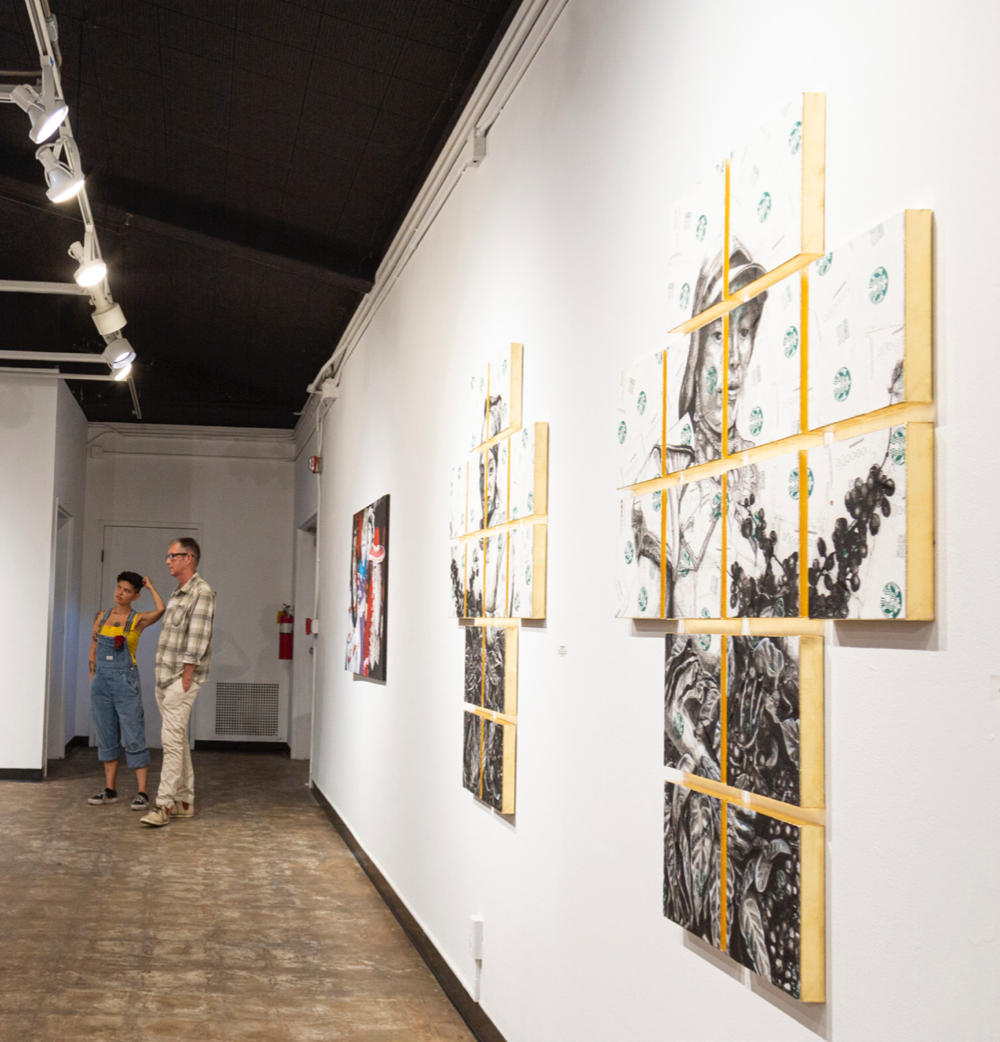
Installation shot Long Beach Art Gallery
GENERATIONAL
Long Beach City College is very proud to participate in the 5th SUR:biennial. The LBCC Art Gallery had been considering a project focusing on local artists identifying as LGBTQIA for some time. When we chose to combine this proposal with the SUR:biennial’s focus on Latinx artists, it was an ideal convergence of interests, but we questioned: just how many artists would there be to select from? Of course, we found plenty. Joey Terrill was the first artist approached for inclusion, and was the catalyst to continue the search. GENERATIONAL, titled primarily because of the age gap between Joey and the younger artists, is Long Beach City College’s second contribution to the SUR:biennial. After reviewing the works of many artists, we purposefully decided on a selection of works made in diverse visual media. Expanding beyond the visual arts, we also included DJ and musician Estefanía Gallo-Gonzalez – Langosta and renowned author Myriam Gurba. The traditional media of painting and printmaking are preferred by Joey Terrill and Victoria Maldonado. Less traditional materials; images drawn on the surfaces of discarded coffee cups, are seen in works by Narsiso Martinez. Dulce Ibarra makes wearable art from colorful shopping bags (suspended from the LBCC Gallery’s ceiling like frostbitten laundry). A musical performance by Langosta and text by Gurba, placed in collaboration with photographer Geoff Cordner’s portraits of Gurba, serve to defy singular definition. Credit for the initial impulse to put together GENERATIONAL goes to longtime activist, artist, and friend of this curator, Joey Terrill. I first got to know of his art in the early ‘80s, not in LA’s mainstream gallery scene, but in local gay bars. Terrill’s instructional pamphlets on safe sex behavior, Chicos Modernos, were available and free, and a welcome discovery on the ‘zine racks of what were then considered “underground” establishments. I didn’t read Spanish at that time, but the graphics were clear enough, and they spoke, and still speak loudly, to the power of imagery to communicate, where language can sometimes fail. Originally, GENERATIONAL was to include more Latinx artists of Terrill’s age. However, through Joey’s connections with younger artists, and with the help of the Arts Council for Long Beach’s Artist Registry, we discovered the works of a wide group of young artists identifying as LGBTQIA. It is inspiring to compare Terrill with activist-artists of today. Many of these younger artists are making and distributing their artworks via social media, instead of in commercial gallery spaces.
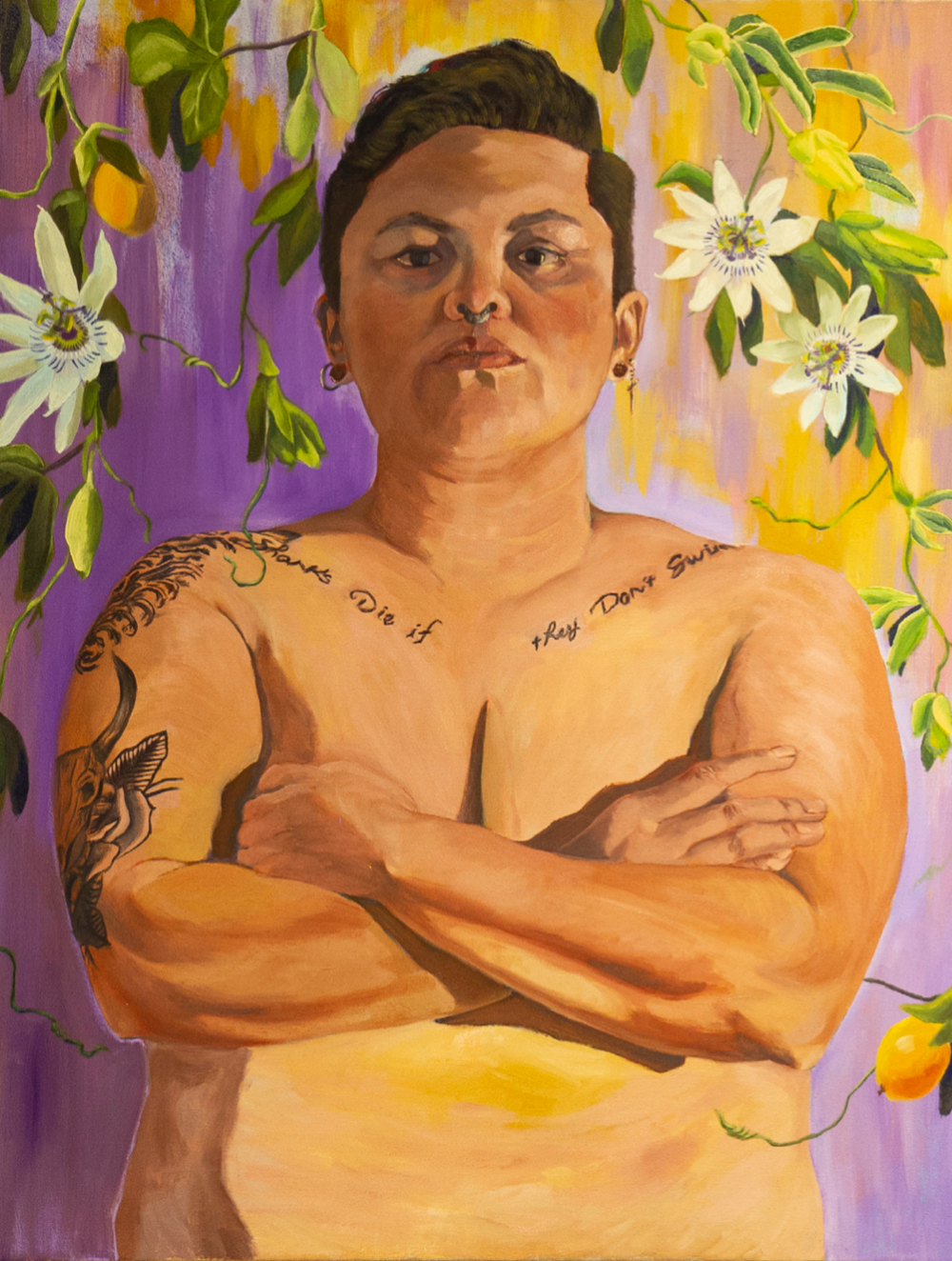
Victoria Maldonado, Tough and Tender, Oil on Canvas, 48" x 36", 2019.
Victoria Maldonado
My experiences as a queer non-binary Mexican-Japanese American navigate much of the content I create. In my art practice, I primarily use portraiture to focus on queer visibility, female empowerment, and multicultural identity. When fabricating an image, I incorporate various methods such as painting, collage, photography, and printmaking.
My goal is to use my platform as an artist to question and challenge complex issues of identity in order to tell stories, demand a call to action, and engage in necessary conversations about the QTPOC community. By educating audiences and sharing my experiences, I use my work to connect with communities and organizations that support and advocate for under-served, marginalized groups.
The selected pieces for Generational serve different purposes. My self-portrait “Tough and Tender” highlights the duality of strength in vulnerability. The intimidating pose the figure projects not only portray dysphoria with their chest, but their struggle with being vulnerable. The pose, often associated with masculinity, juxtaposes the floral elements in the background, typically seen as feminine. The Passion flowers seen in the painting depict two things: non-binary representation (passion flowers are double-sexed flowers) and my childhood (planted in the backyard of my childhood home). This self-portrait honors the notion of embracing all the parts of me I was taught could not exist in order to be strong. Feminine and masculine, tough and tender; I am not one, or the other. I am both “Victoria + Daddy” serves as tribute to my late father, my mother, and siblings. As an adult, I’ve come to terms with all the things my late father wouldn’t be present for, including my coming out as queer and non-binary. Struggling to make peace with this, the portrait of my father and I represent my support system: my mother and siblings. The collage embedded throughout the painting describes the childhood memories of my family while my father was alive. Despite never knowing if I would ever have his support, I have my mother and my siblings’. “Victoria + Daddy” allows me to feel, to grieve, to release. Mostly, this portrait allows me joy.
The contributions of Trans women of color paved the way for LGBTQ rights. For Generational, I wanted to shed light on the current issue of violence against Trans women of color. “Saint Marsha” honors Marsha P. Johnson, a black Trans woman and one of the pioneers for the movement, and her efforts and advocacy for the LGBTQ community. Due to its lack of media coverage, I included the names of every reported Trans woman killed last year in “Saint Marsha.”
Lastly, “Not Your Goddess, Not Your Doormat” challenges the Madonna-Whore complex women are constantly subjected to by men such as Picasso. Although I was not out as non- binary yet, my portrait rejects his assertion of women being either a “goddess or doormat.” I painted two versions of myself holding hands into the foreground of one of his famous paintings, “Les Demoiselles d’Avignon.” These versions symbolize how multifaceted women are – the figures are neither polar opposites or identical – they each are their own complex person.
Victoria Maldonado is an illustrator and painter currently living and working in Long Beach, CA.
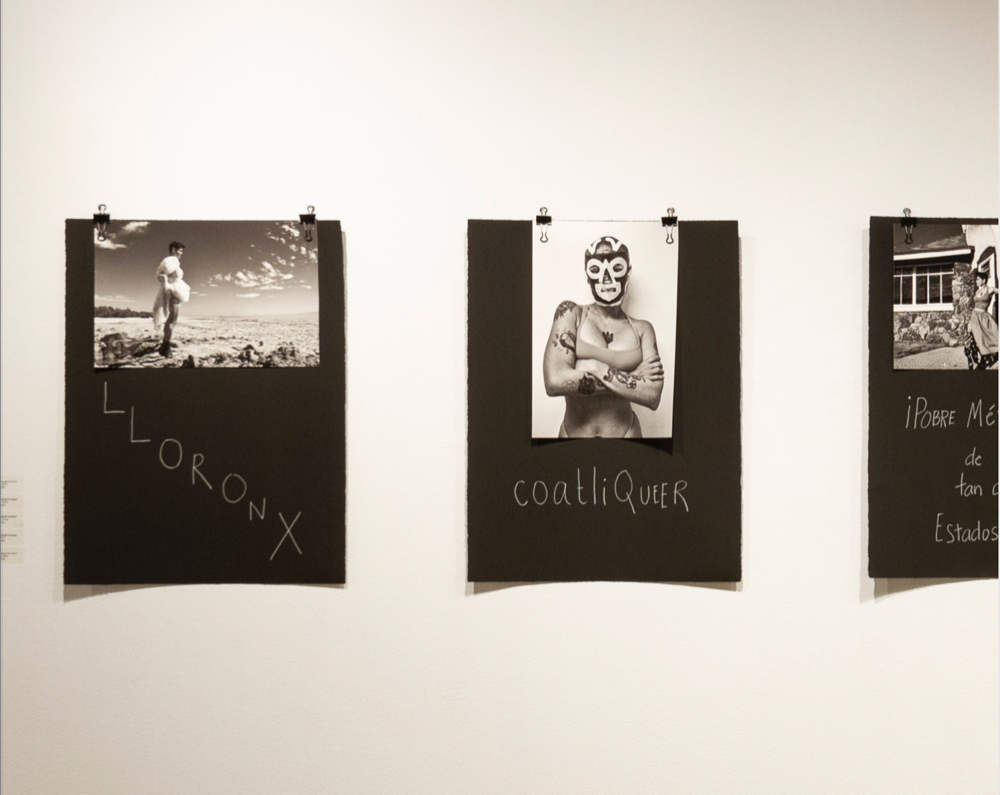
Myriam Gurba wirh Geoff Cordner, Lloronx and CoatliQueer, Each 30" x 22.5", Photo
and Text on Paper, 2019.
Myriam Gurba with Geoff Cordner
We are visual collaborators, not artist and model. Our work channels spirits including but not limited to those of Juan Rulfo, dead Mexican wrestlers, and Tongolele. Walls are terrible at keeping out ghosts.
Myriam Gurba is a queer writer, storyteller, and visual artist from Santa Maria, California. She currently lives in Long Beach, California, where she teaches high school, writes, and makes art. Gurba is the author of several books, many chapbooks, and various articles, essays, and short stories which have been internationally published. NBC described her short story collection Painting Their Portraits in Winter as “edgy, thought-provoking, and funny.”
Geoff Cordner was raised in Libya, Western Canada, and Egypt, finally moving to Los Angeles where he became involved in the early ‘80s punk music scene, photo- documenting this phenomenon for various punk ‘zines. In 1988, Cordner moved to Milan, Italy for an intended six-month stay, which turned into a productive, six-year sojourn. He worked in Italy first as a fashion model and then as a fashion photographer. Cordner has lived and worked in Los Angeles since 1995.
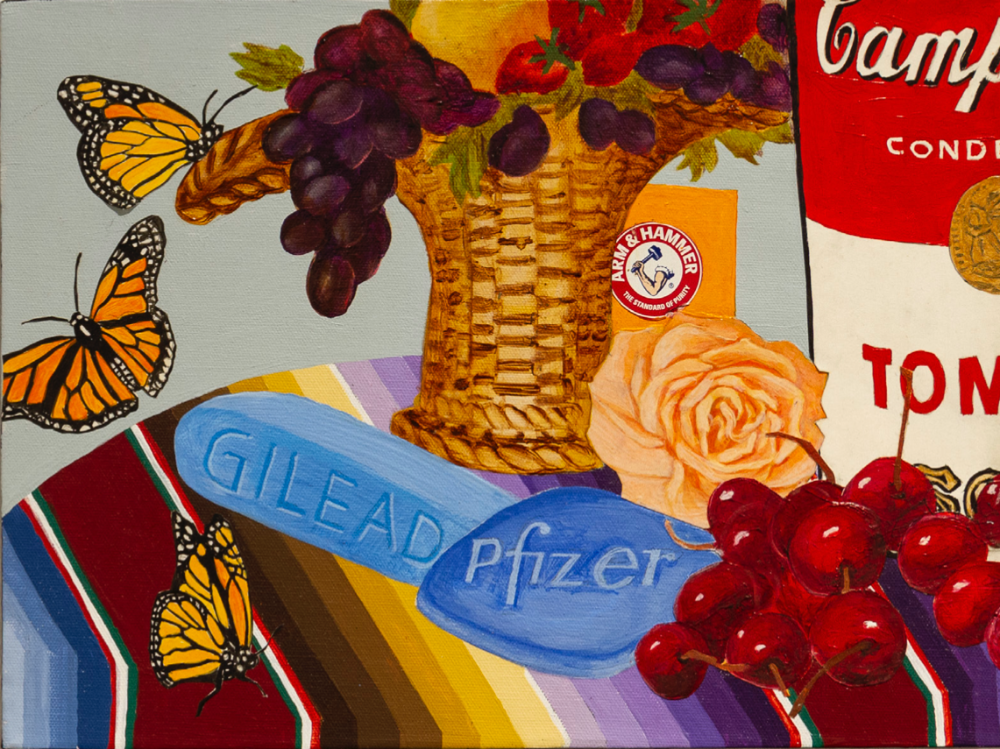
Joey Terrill, Still Life with Two Blue Pills, Mixed Media on Canvas, 10" x 12", 2014.
Joey Terrill
Joey Terrill has been a tireless artist/activist for Latino and LGBTQIA causes since the 1970s. His work in both art and activism, and particularly the unification of the two areas, has influenced the contemporary Latinx art scene. Joey continues to make art while also working full-time, travelling internationally to promote AIDS awareness for the AIDS Healthcare Foundation. He has even addressed the United Nations on the subject.
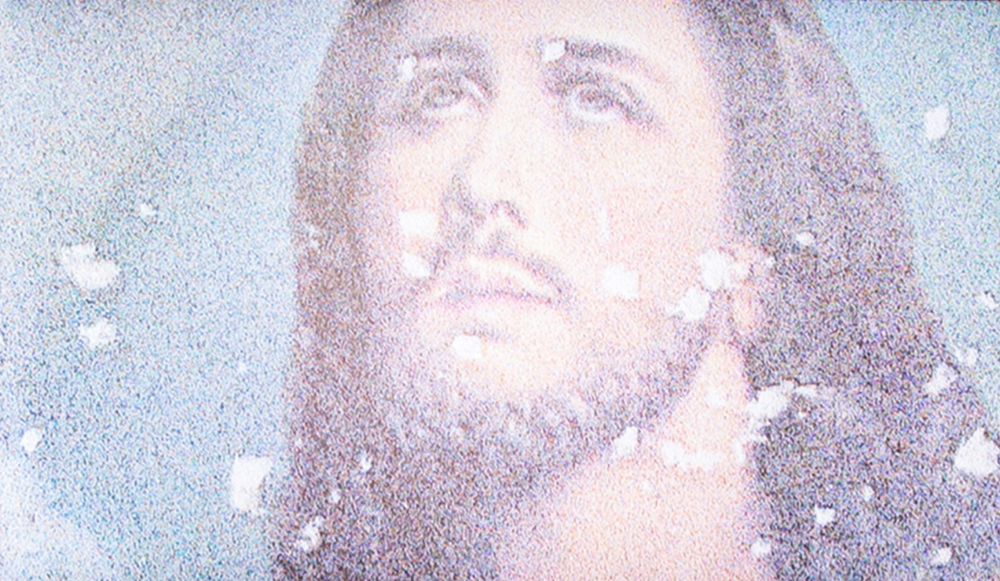
Estefania Gallo-Gonzalez-Langosta, Seva Dar (Video Still), 2019.
Estefania Gallo-Gonzalez-Langosta
Estefanía Gallo-Gonzalez – Langosta holds a degree in Gender and Women’s Studies / Music. She has a passion for both music and the visual arts, working as a DJ, producer, and jazz/funk vocalist based in Los Angeles. Langosta combines rhythms from her Afro-Colombian background with beats from electronic dance music, alongside vocals from her jazz musical training. Langosta hosts the radio show Mujer Mundial on KSPC 88.7 FM and KQBH 101.5FM. It airs on KQBH 101.5FM on Mondays at 11 PM and ends at 1:00 AM Tuesday mornings. Mujer Mundial weekly showcases a woman of color somewhere around the globe who is currently impacting the world of music.
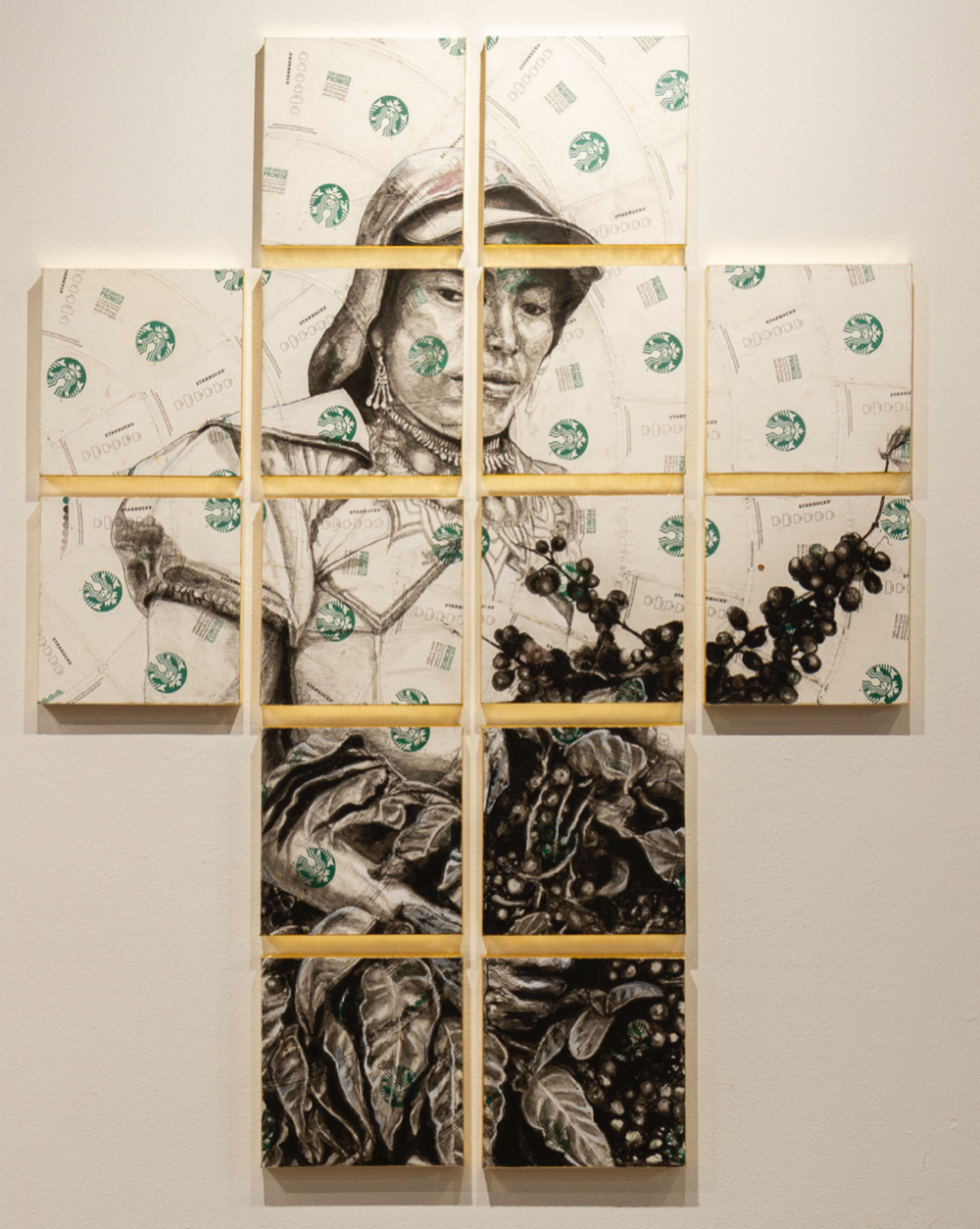
Narsiso Martinez, Francis, Mixed Media on Recycled Cups Mounted on Canvas, 60" x 50",
2019.
Narsiso Martinez
My drawings are based on my personal experience with the agricultural industry. I grew up in an agricultural environment and I’ve been connected to the fields since I was a kid. From my experience as a farmworker, I conceived of a project that involved non-traditional collaboration with industrial printers. Influenced by masters such as Millet, Van Gogh, and Siqueiros, I attempted to start a dialogue with the food industry by contrasting the agribusiness with its laborers. I chose agricultural workers and drew them on produce cardboard boxes collected from different grocery stores, and that was the beginning of this project.
Working in the fields for many years has made me realize that there is a big difference between the lifestyles of the workers and that of the agribusiness owners. The majority of farmworkers live in an economic struggle every day to sustain their families and to provide them with the basics. Meanwhile, the plantations keep multiplying and the owners are provided with a life of luxuries. I aim to contrast the disparities of lifestyles between workers and owners through usage of symbols, some found on the used boxes and others produced through the art-making process. Because of my personal experience, I admire artists who have depicted the harsh living conditions of their social groups and time period. Artists such as Jean-François Millet, Vincent Van Gogh, and David Alfaro Siqueiros have inspired my vision.
In my work, I include farmworkers, some in their everyday settings and some as portraits. I use collage, ink, gouache, charcoal, and cardboard boxes for support. With vine charcoal, I start to draw the composition and linear structure. With white gouache, I tone down printed areas to integrate the drawing. Then, I proceed to define shadow edges to clarify light and shade. Next, I use ink washes to generalize the tone of the whole composition. Finally, I use compressed charcoal and charcoal pencils to emphasize desired areas with details, creating a dialogue between the dark and messy charcoal and the colorful, neat print on the boxes. Through the juxtaposition of produce labels from reclaimed produce boxes and the drawings of agricultural workers on those boxes, I attempt to create unique compositions that allow me to reflect on the differences in social lifestyles and the questionable economic systems that contribute to those differences. At the same time, I see my work as a possible catalyst for discussions about the common ground between the well-off and the less fortunate.
Born in Oaxaca, Mexico, Narsiso Martinez now lives and works in Long Beach, CA. The artist began his educational journey by taking English language courses to get his GED. An art history class at Los Angeles City College brought back childhood memories of sketching his family members, and this experience reignited his passion for art. Martinez later earned his MFA from California State University, Long Beach. While an undergraduate at CSULB, the artist continued working in orchards to earn a living, and this is an experience that fuels his art practice and his research into the lives of field workers.

Dulce Soledad-Ibarra, Bolsore (Wearable 2), Grocery Store Bags, Thread, and Buttons.
64" x 62", 2019.
Dulce Soledad-Ibarra
While objects manipulated and made have importance as charged symbols, my process has been more about research, not just in an academic approach but in an emotional and personal approach. There is privilege in emotional and intellectual labor: I acknowledge this, I expand on this, and I critique this. I produce work that relies on the inclusivity of guilt; developing narratives that have strong intersections between identities, histories, and traumas. The guilt is found in being a child of immigrants, in adolescent internalized racism, in surpassing the generation before, in the stutters of a first language, in keeping queerness at a distance from family, in the investments in the art world.
Born in Chino, CA and now living and working in Long Beach, Dulce Soledad Ibarra is a multidisciplinary artist, curator, designer and nonprofit arts advocate with special interests in community and identity-focused arts and opportunities. As a practicing artist, Ibarra discusses issues of generational guilt and cultural identities in videos, installations, and performances.

Stay Connected